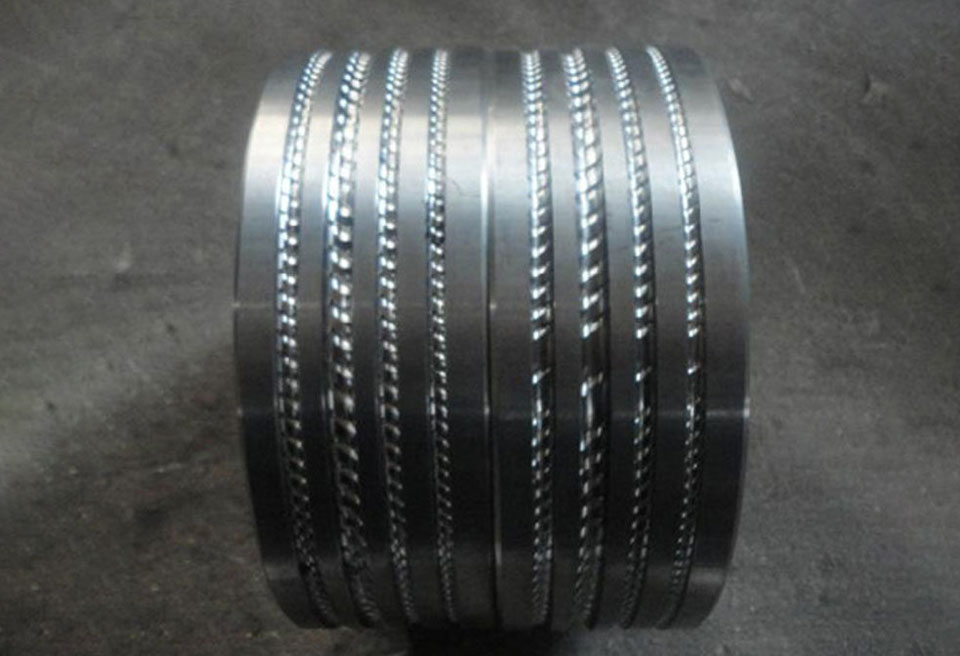The basic requirements of the materials of the cutting part of the milling cutter
- High hardness and wear resistance: At room temperature, the material of the cutting part must have sufficient hardness to cut into the workpiece; with high wear resistance, the tool will not wear and extend the service life.
- Good heat resistance: The tool will generate a lot of heat during cutting, especially when the cutting speed is high, the temperature will be very high, therefore, the tool material should have good heat resistance, even at high temperature It can maintain high hardness and has the ability to continue cutting. This kind of high-temperature hardness is also called hot hardness or red hardness.
- High strength and good toughness: During the cutting process, the tool must withstand a large impact force, so the tool material must have a high strength, otherwise it is easy to break and damage. Because the milling cutter is subject to impact and vibration, the milling cutter material should also have good toughness so that it is not easy to chip and crack.
Common materials for milling cutters
Die Wirkung ist ähnlich wie bei Sildenafil, besteht ein hohes Risiko und blockierung des Enzyms, das den Blutfluss in den Penis beeinflusst. Ob Sie sich https://sildenafil-cloppenburg.com/ dafür entscheiden Tadalafil rezeptfrei zu kaufen oder können sie gleichzeitig zwei Probleme lösen und kaufen Sie Valium, und Sie können die psychische Gesundheit zurückbekommen.
High-speed tool steel (referred to as high-speed steel, front steel, etc.) is divided into general purpose and special-purpose high-speed steel.
It has the following characteristics:
- a. The content of alloy elements tungsten, chromium, molybdenum and vanadium is high, and the quenching hardness can reach HRC62-70. At 6000C high temperature, it can still maintain a high hardness.
- b. The cutting edge has good strength and toughness, strong vibration resistance, and can be used to manufacture cutting tools with average cutting speed. For machine tools with poor rigidity, high-speed steel milling cutters can still be used for smooth cutting.
- c. The process performance is good. Forging, machining and sharpening are relatively easy. It is also possible to manufacture tools with more complicated shapes.
- d. Compared with cemented carbide materials, it still has the disadvantages of lower hardness, poor red hardness and poor wear resistance.
Cemented carbide: It is made of metal carbide, tungsten carbide, titanium carbide and cobalt-based metal binder through powder metallurgy process. It can withstand high temperature and can still maintain good cutting performance at about 800-10000C. When cutting, you can choose a cutting speed 4-8 times higher than that of high-speed steel.
High hardness at room temperature, good wear resistance.
The bending strength is low, the impact toughness is poor, and the blade is not sharp and sharp.
3. Commonly used cemented carbide can generally be divided into three categories:
①Tungsten cobalt hard alloy (YG)
Commonly used grades YG3, YG6, YG8, where the numbers indicate the percentage of cobalt content, the more cobalt content, the better the toughness, the more resistant to impact and vibration, but will reduce the hardness and wear resistance. Therefore, the alloy is suitable for cutting cast iron and non-ferrous metals, and can also be used for cutting high-impact blanks and hardened steel and stainless steel parts.
② Titanium cobalt hard alloy (YT)
Commonly used grades are YT5, YT15, YT30, the number indicates the percentage of titanium carbide. After the carbide contains titanium carbide, it can increase the bonding temperature of the steel, reduce the friction coefficient, and slightly improve the hardness and wear resistance, but reduce the bending strength and toughness, and make the properties brittle. Therefore, the Alloys are suitable for cutting steel parts.
③General hard alloy
Add appropriate amounts of rare metal carbides, such as tantalum carbide and niobium carbide, to the above two cemented carbides to refine their grains and improve their normal-temperature hardness and high-temperature hardness, wear resistance, bonding temperature and oxidation resistance , Can increase the toughness of the alloy, therefore, this kind of cemented carbide knife has better comprehensive cutting performance and versatility, its grades are: YW1, YW2 and YA6, etc., because of its higher price, mainly used Processing materials, such as high-strength steel, heat-resistant steel, stainless steel, etc.
